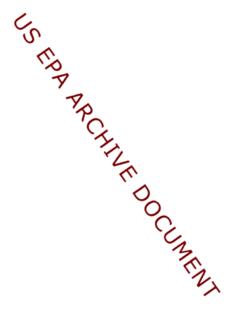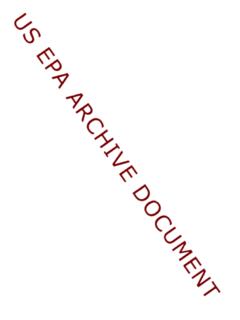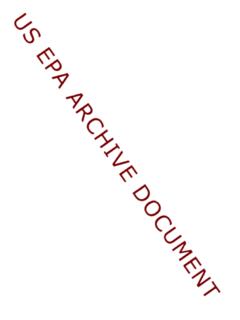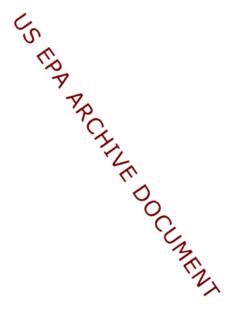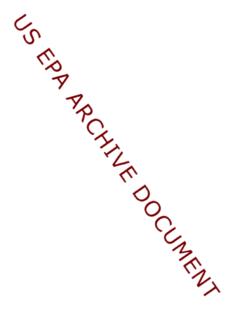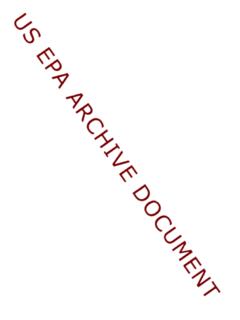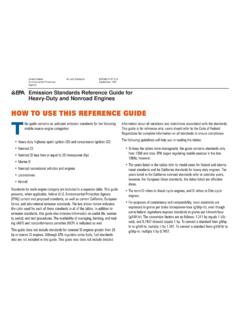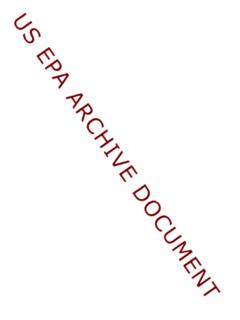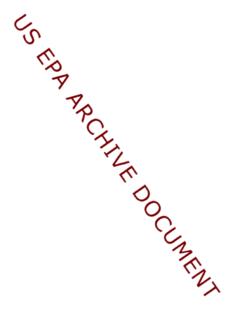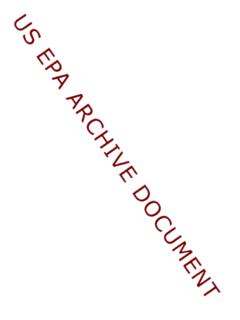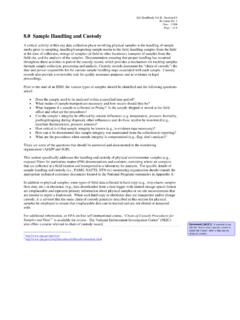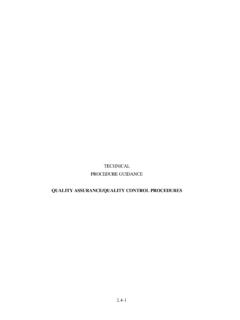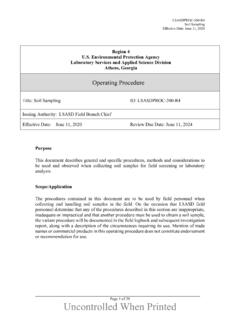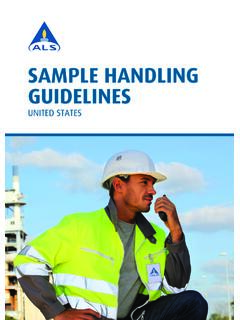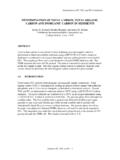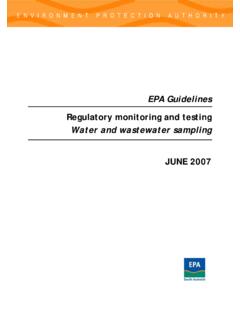Transcription of Sample Packaging Standard Operating Procedure: May 2001 ...
1 Title: Sample Packaging Category: ENV Revised: May 2001 ecology and environment, inc. Sample Packaging Standard Operating PROCEDURE 1998 Ecology and Environment, Inc. 368 Pleasant View Drive / Lancaster, New York 14086 / (716) 684-8060 TITLE: Sample Packaging CATEGORY:ENV REVISED: May 2001 None of the information contained in this Ecology and Environment, Inc., (E & E) publication is to be construed as granting any right, by implication or otherwise, for the manufacture, sale, or use in connection with any method, apparatus, or product covered by letters patent, nor as ensuring any-one against liability for infringement of letters patent. Anyone wishing to use this E & E publication should first seek permission from the company. Every effort has been made by E & E to ensure the accu-racy and reliability of the information contained in the document; however, the company makes no representations, warranty, or guarantee in connection with this E & E publication and hereby expressly disclaims any liability or responsibility for loss or damage resulting from its use; for any violation of any federal, state, or municipal regulation with which this E & E publication may conflict; or for the infringement of any patent resulting from the use of the E & E publication.
2 TITLE: Sample Packaging CATEGORY:ENV REVISED: May 2001 TABLE OF CONTENTS Section Page 1. 2. 3. Sample Packaging Liquid environmental Sample Packaging Soil/Sediment environmental Sample Packaging 4. Shipping iii TITLE: Sample Packaging CATEGORY:ENV REVISED: May 2001 1. Introduction Liquid and solid environmental samples are routinely collected by E & E during field surveys, site investigations, and other site visits for laboratory analysis. Unless the samples have anesthetic, noxious, or other properties that could inhibit the ability of a flight crew member to perform his or her duty or are known to meet the established Department of Transportation criteria for hazardous material ( , explosive, corrosive, flammable, poisonous), they are not regulated as hazardous materials.
3 This Standard Operating Procedure (SOP) describes the Packaging procedures to be used by E & E s staff to ensure the safe arrival of the samples at the laboratory for analyses. These procedures have been developed to reduce the risk of damage to the samples ( , breakage of the Sample containers), promote the maintenance of Sample temperature within the cooler, and prevent spillage of the sampled material should a container be broken. In the event the Sample material meets the established criteria of a DOT hazardous mate-rial, the reader is referred to E & E s Hazardous Materials/Dangerous Goods Shipping Guidance Manual (see H&S ). 2. Scope This SOP describes procedures for the Packaging of environmental samples in: Coolers; Steel, aluminum and plastic drums; and 4GV fiberboard boxes.
4 The Hazardous Materials/Dangerous Goods Shipping Guidance Manual will complete the information needed for shipping samples by providing guidance on: Hazard determination for samples which meet the USDOT definition of a hazardous material; Shipping profiles for Standard shipments; Shipping procedures for non- Standard shipments; Marking of packages containing hazardous materials; Labeling of packages containing hazardous materials; and Preparation of shipping papers for hazardous materials shipment. 1 TITLE: Sample Packaging CATEGORY:ENV REVISED: May 2001 3. Sample Packaging Procedures General It is E & E s intent to package samples so securely that there is no chance of leakage dur-ing shipment. This is to prevent the loss of samples and the expenditure of funds for emergency responses to spills and the efforts necessary to re-obtain the Sample .
5 Over the years, E & E has developed several Standard package configurations for the shipping of environmental samples. These Standard package configurations are described below. Liquid samples are particularly vulnerable. Because transporters (carriers) do not know the difference between a package leaking distilled water and a package leaking a hazardous chemical, they will react to a spill in an emergency fashion, potentially causing enormous ex-pense to E & E for the cleanup of the Sample material. Therefore, liquids are to be packed in multiple layers of plastic bags and absorbent/cushioning material to preclude any possibility of leaks from a package. This section defines the Standard Packaging configurations for environ-mental samples. Liquid environmental Sample Packaging Procedures Liquid environmental samples should be collected and preserved as outlined in the Stan-dard Operating Procedures (SOP) for Surface Water Sampling (ENV ), and Groundwater Well Sampling (ENV ).
6 Preserved water samples are not considered to meet the HM/DG definitions of Class 8 (Corrosive) and are therefore considered to be nonhazardous samples. Liquid environmental samples may be shipped using an 80-quart cooler or an outer package con-sisting of either a steel or aluminum drum. Because the steel and aluminum drums provide little insulating capability, they should not be used for samples that require icing. Packaging Liquid environmental Samples Using the 80-Quart Cooler Label and seal all water Sample bottles according to appropriate sampling SOPs; Secure the bottle caps using fiberglass tape; and Place each amber, poly, and volatile organic analysis (VOA) bottle in a sealable plas-tic bag. Mark the temperature blank VOA bag for identification.
7 If a foam block insert is used: Line the cooler with two plastic bags; Place a foam insert (with holes cut to receive the Sample bottles) inside the plastic bag; Place the bottles in the holes in the foam block; 2 TITLE: Sample Packaging CATEGORY:ENV REVISED: May 2001 Fill void spaces with bagged ice to the top of the cooler; Fold over the plastic bags lining the cooler and secure shut with tape; Place chain -of- custody (C-O-C) form in a sealable bag and tape it to the inside of the cooler lid; and Secure the cooler with strapping tape and custody seal. Cover the custody seals with clear tape. If vermiculite is used: Place 1 inch of inert absorbent material (vermiculite) in the bottom of the cooler; Line the cooler with two plastic bags; Place each Sample bottle inside the inner bag; Fill the void spaces around the bottles with vermiculite to about half the height of the large bottles; Fill the remainder of the void spaces with bagged ice to within 4 inches of the top of the cooler, making sure the VOAs are in direct contact with a bag of ice; Fold over the plastic bags lining the cooler and secure shut with tape; Fill the remaining space in the cooler with vermiculite to the top of the cooler; Place C-O-C form in a sealable bag and tape it to the inside of the cooler lid.
8 And Secure the cooler with strapping tape and custody seal. Cover the custody seals with clear tape. Alternate Packaging Using 1A2/1B2 Drum Place 3 inches of inert absorbent material (vermiculite) in the bottom of the drum; Line the drum with two plastic bags; Place each Sample bottle inside the inner bag; Fill the void spaces around the bottles with vermiculite to the height of the larger bot-tles; 3 TITLE: Sample Packaging CATEGORY:ENV REVISED: May 2001 Fold over the plastic bags lining the drum and secure shut with tape; Fill the remaining space in the drum with vermiculite to the top of the drum; Place C-O-C form in a sealable bag and tape it to the inside of the drum lid; and Secure the drum with closing ring and apply custody seals.
9 Cover the custody seals with clear tape. Soil/Sediment environmental Sample Packaging Procedures Soil/sediment environmental samples should be collected as outlined in the SOP for Soil Sampling (ENV ), and SOP for Sediment Sampling (ENV ). Soil/sediment environ-mental samples may be shipped using an 80-quart cooler, a 4GV fiberboard combination pack-age, or an outer package consisting of either a steel or aluminum drum. Because the steel and aluminum drums provide little insulating capability, they should not be used for samples that re-quire icing. Packaging Soil/Sediment environmental Samples Label and seal each Sample container according to SOPs; Secure the bottle caps using fiberglass tape; Place each Sample bottle inside a sealable plastic bag and place it in its original ship-ping box or in individual fiberboard boxes.
10 Mark the temperature blank bag for iden-tification; and Secure the original shipping box with strapping tape, place shipping box in a plastic bag, and secure the plastic bag with tape. If an 80-quart cooler is used: Place bubble pack or similar material on the bottom and sides of an 80-quart cooler; Place the bagged shipping boxes in the cooler with a layer of bubble pack between each box; Fill the void spaces with blue ice or ice in baggies to the top of the cooler; Place C-O-C form in a sealable baggie and tape it to the inside of the cooler lid; and Secure the cooler with strapping tape and custody seal. Cover the seals with clear tape. 4 TITLE: Sample Packaging CATEGORY:ENV REVISED: May 2001 If a 1A2/1B2 drum is used: Place 3 inches of inert absorbent material (vermiculite) in the bottom of the drum; Line the drum with two plastic garbage bags; Place the boxes inside the inner bag; Fill the space around the samples with vermiculite; Fold over the plastic bags lining the drum and secure shut with tape; Fill the remaining space around the bags with vermiculite to the top of the drum; Place C-O-C form in a sealable bag and tape it to the inside of the drum lid; and Secure the drum with the closing ring and apply custody seals.
